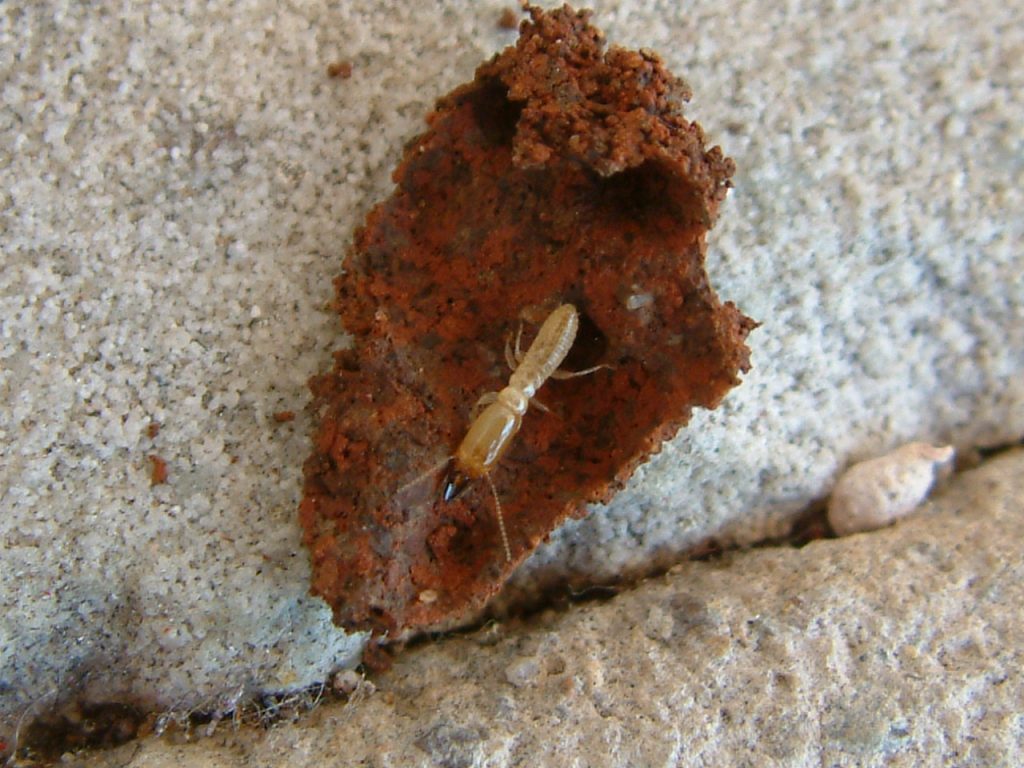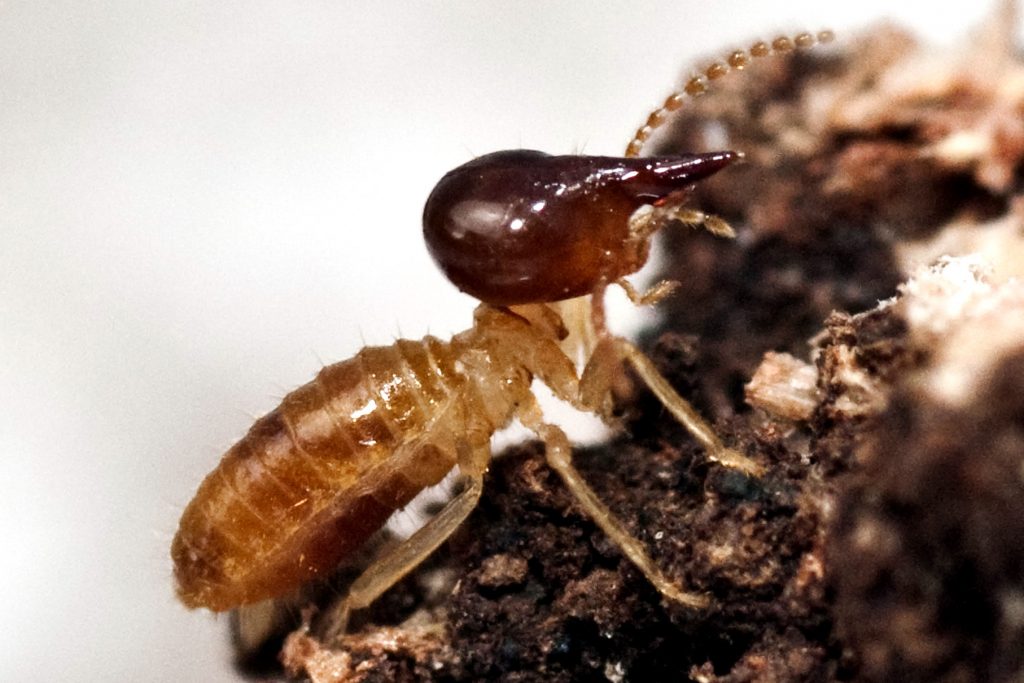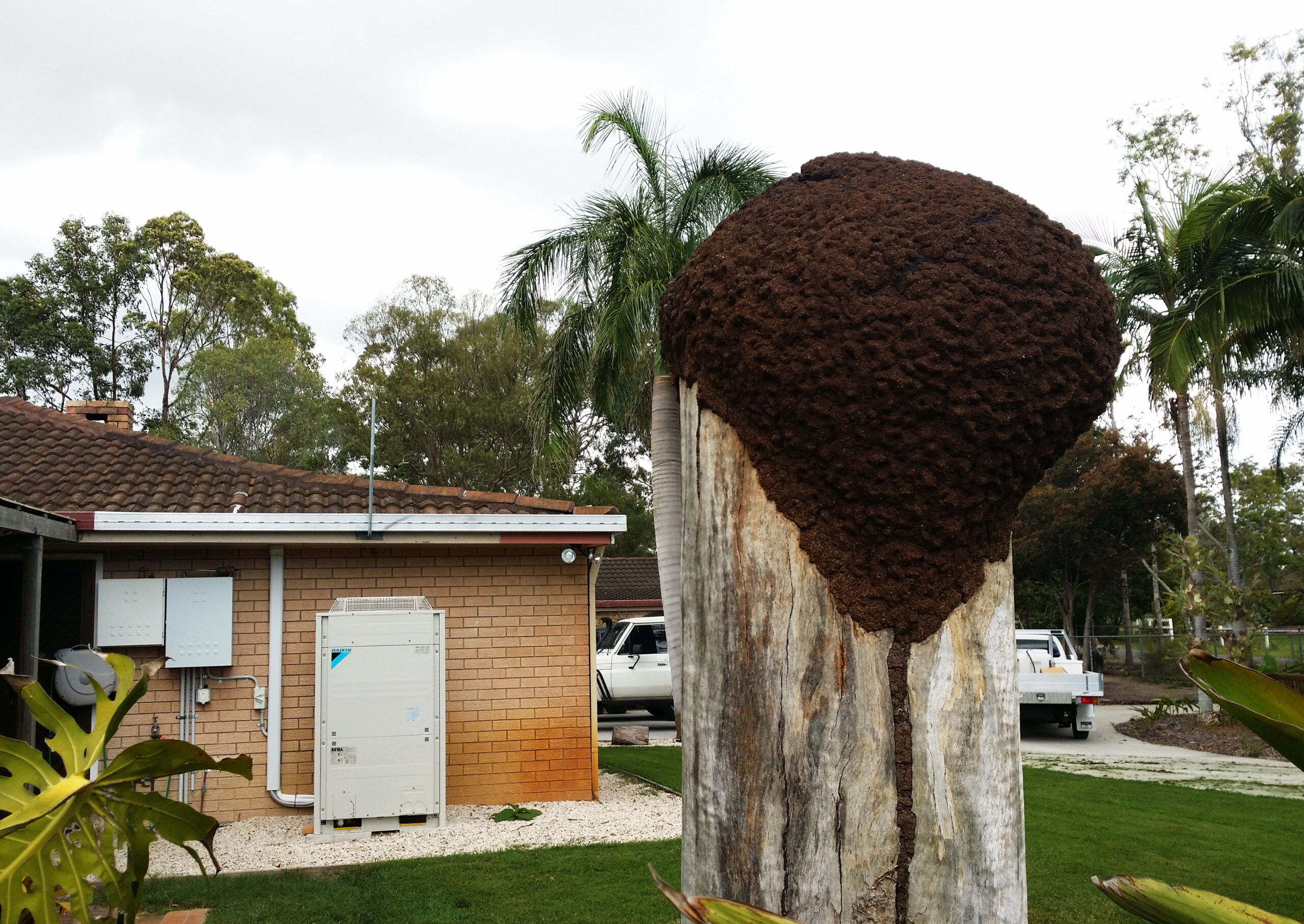This is the second article in a series about different termite species in Brisbane. We started off with Schedorhinotermes and Coptotermes in the first post, which you can read here. This post will investigate two less aggressive subterranean termite species, but nonetheless good reasons to install a termite barrier around your home.
Heterotermes

This termite species has a tendency to follow in the tracks of other more aggressive species. They fill up their galleries with mud as they go. They work in a slower manner, but can still cause damage to your home. Another interesting behaviour in this species is that they leave and later return to different feeding spots. Many times they are gone by the time damage is discovered, but this may lead to a false feeling of security – as they are likely to return sooner or later. This “coming and going” behaviour often hinders the normal initial termite treatment of dusting or foaming, and it makes them hard to conclusively identify.
Heterotermes often live close to other species of termites. They appear to piggyback on other species at times, and may even attack and take over more innocent types. This hijacking may also slow down the rate of destruction in your home, if they attack a more aggressive species.
When on their own they mainly attack fences and free standing posts, they also have a taste for gyprock. The most common trail in homes is warped skirtings and trims, and lots of dried mud in the cavities they leave behind.
As this species is so hard to track down any trace of them is a good reason to install a non-repellent termite barrier. Even if there is no current termite activity, they are very likely to return and continue from where they left off.
Nasutitermes

If you have ever seen a mud nest in a tree in the Brisbane area it is most likely Nasutitermes. The nest is dark or black, often big and relatively smooth on the outside. There are often mud leads along the trunk of the tree leading up to the nest. This makes them incredibly easy to detect at most times, and this is why a termite technician will have a look in the trees in your yard.
Unlike most termite species Nasutitermes will devour hardwood. The most common targets are Queenslanders and cavity brick homes which have hardwood framing. They will focus on the toughest wood and leave softwood behind. Nasutitermes cover the wood they eat with black or very dark mud, initially only a thin layer which accumulates as the attack advances.

Alike Coptotermes Nasutitermes have quite aggressive soldiers, which also produces a glue-like substance to protect the colony. The soldiers have a pointy nose making them very easy to identify.
When treating this species it is important to not destroy the arboreal nests, as amongst others kingfishers and possums like to live in them. Treatment is effective without physically destroying the nest by installing a termite non-repellent barrier around the home.
Contact Termite Guys Brisbane
Call and email us for a free quote on Barrier treatments.
Please do not hesitate to contact Michael:
Phone: 0447 268 257
Office: 3393 3515
Email: inspector@staging.termiteguys.com.au


